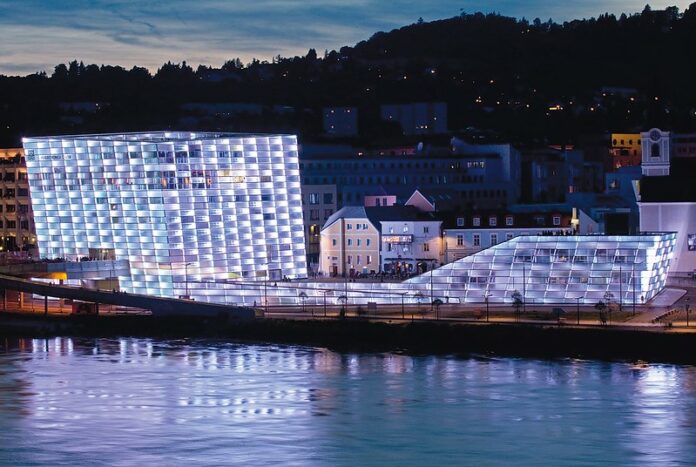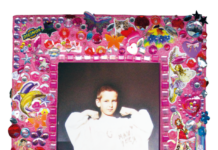
Permanent exhibitions 2021.
“Navigating the Future” is the motto of the Ars Electronica Center. In the Museum of the Future, topics of the future are the exhibitions of today. Here you can watch artificial intelligence “think,” experience self-driving cars, program robots or 3D print.
Current exhibitions include: Deep Space 8K, Understanding AI, Neuro Bionics, Global Shift:
Deep Space 8K
A 16 by 9 meter wall projection, an equally large floor projection, laser tracking and 3D animations make Deep Space 8K unique. Here, imagery is projected in 8K resolution and taken to a whole new level. Gigapixel photographs, time-lapse videos, historical sites in 3-D, images from inside the human body and hands-on games are presented to visitors several times a day.
Understanding AI
What is artificial intelligence? And what do we actually know about human intelligence? How intelligent can artificial intelligence be in comparison? More importantly, what impact will advances in this field have on our society?
Artificial intelligence offers ample room for speculation about the future. What is certain is that this technology has already profoundly changed everyday life and will continue to do so. Algorithms have long supported us in a wide variety of areas such as autonomous driving, security technology, marketing or in social media. Artificial intelligence is even being used to create works of art. But how many of our tasks do we want to outsource to machines? No other development is currently asking us so clearly how we want to use our technical resources in a social context.
Neuro Bionics
The brain is a fascinating organ. For hundreds of years, scientists have been studying our brains to find out how all our conscious and unconscious functions are controlled, how we feel and perceive, think and decide. Fantastic apparatuses, better and worse, have been designed to learn more and more about how the brain works.
Just as in other technological fields, much has happened recently in neurology. Measuring devices are becoming more accurate, new methods of visualization are being invented, and it is possible to target smaller and smaller cell structures. It is even possible to communicate with coma patients, and attempts are being made to track down diseases such as Alzheimer’s and the great mysteries of intelligence and consciousness.
Global Shift
Humans are now profoundly changing the natural habitat for their own purposes. Besides the concrete deserts and the waste we produce, there are many other examples that bear witness to this. But it was not always so.
The current age, Holocene, has been going on for about 11,700 years. It was not until the Industrial Revolution in the 18th century that human impact on our habitat increased significantly. Because of these drastic changes that have taken place in this relatively short period of time, the epochal term Anthropocene has since been coined: the age in which human actions have become the most significant factor in biological, geological and atmospheric changes.
Ars Electronica Center
Permanent Exhibitions
AEC Center Linz
Ars-Electronica-Straße 1
4040 Linz
www.ars.electronica.art











